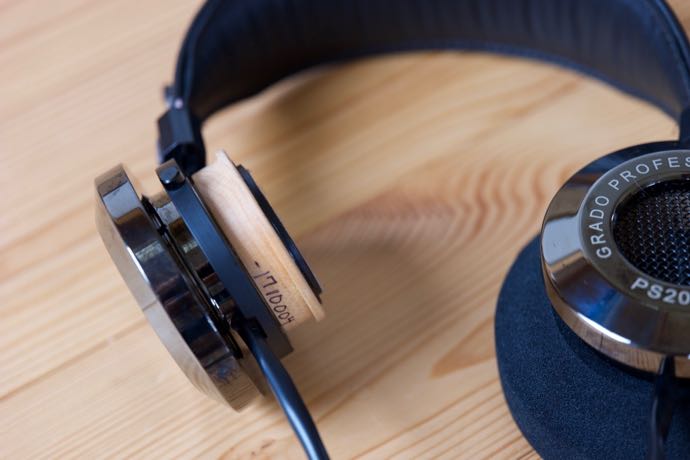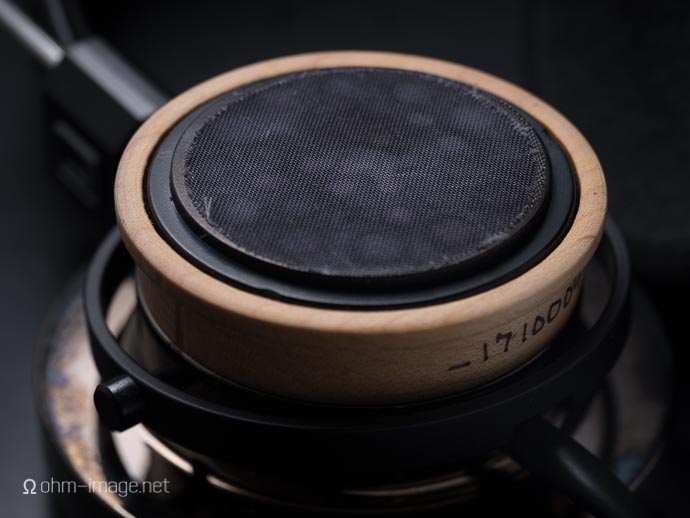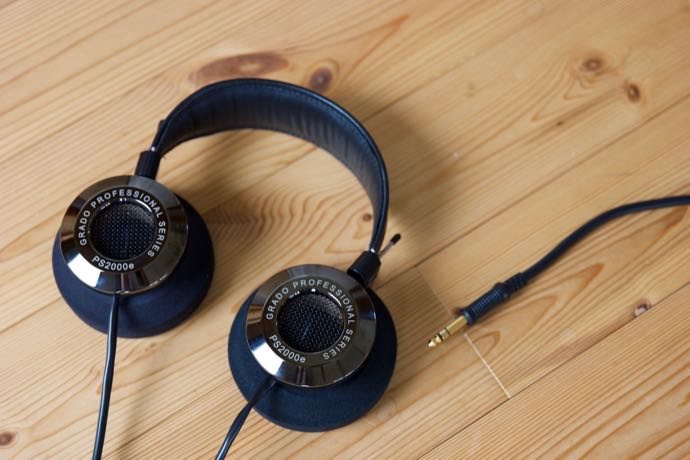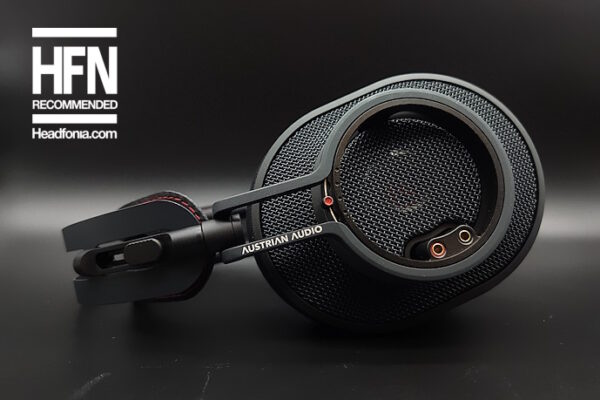Sound
At 99dB and 32Ω, the PS2000e gets loud, and gets there quick. And, despite being a large over the ear headphone, it hisses. It will even hiss from DAPs like the iPod (5G) Video and original Astell & Kern AK100. It is sensitive enough to detect faint line noise in otherwise high quality amps, DACs, and receivers. If you’re a Grado guy or gal, this is old news. If you’re coming from Beyer or Sennheiser, or Audeze’s full size headphones, this may be new.
The PS2000e gets loud, quick. Low-current, high-voltage amps will cause it to clip at volumes that usually don’t phase them – or your favourite phones.

As is typical of low impedance loads, the PS2000e requires large amounts of voltage to keep up a solid bass signal. The poor outputs of the aforementioned iPod and AK’s are unable to keep up. Usually, this is a bad thing. Properly driven, the PS2000e is shiny, wide, and smartly bass anchored. Improperly driven, it narrows both low-frequency stereo image and impact. In one fell swoop, the PS2000e turns into a somewhat stuffy electrostatic headphone.

Many portables can drive the PS2000e just fine. Among others, these players are Ryuzoh’s modded AK100, Plenue D, AK70 Kai, RWAK100, Onkyo DP-S1, Astell&Kern AK380, The Bit Audio Opus#1, etcetera. My favourite source is the Lynx HILO. Through any of these, you’ll get a hybrid signature largely sortable into two largely compatible containers: shiny mids, and speedy, wide-brimmed bass. It’s the signature Grado were trying for but missed in the PS1000- or, at least that is how I read it.

Both my wife and I love the PS1000, but there is something remarkably annoying about it. That annoying thing is a tendency for higher voiced vocals and instruments and the surroundings frequencies to suck into a single, positional point rather sliding up and out, like they are being sucked through a crack in a nearby window. The Ultrasone IQ does something similar. Largely, the PS2000e avoids this pitfall. The same frequency band similarly moves up, but doesn’t coalesce into a narrow channel. Instead, that channel is wider, and positioned lower. It is easier to pick out the 3D position of instruments. Now, if super wide stages are your thing, the PS2000e isn’t going to grab you by the nethers, demanding a purchase. You’ll still get more mileage from a mid-range Beyer, and greater non-vocal texture through the likes of a HD600. But of all the Grado headphones I’ve heard, the PS2000e’s is the widest, and most three-dimensional. If you choose Grado because of intimacy, or the feeling of being right there with the musicians, the PS2000e may not be for you. It puts you further back, a couple of rows into the audience, and out of the safe space that used to be a mosh pit. You won’t be able to suss the size of the recording venue, particularly if it is a concert. But you’ll get to taste more of the crowd than you do in other Grado headphones. For me, traditionally a member of Team Beyer, this is welcome.

The best way I can describe the entire PS2000e midrange is molten, which is a common and exquisitely obvious theme of high-end PS Grado headphones. In contrast, the GH-2’s transition zone is grainy, or at the very least, dry. This is where the PS2000e reminds me of a reference Beyerdynammic. Unlike the Beyers, though, highs tread nowhere close to sibilance.
The PS2000e’s stereo spread is wide for a Grado, but its real trick is the amount of z-axis space it pushes, which is almost as deep as the sound stage is wide. This is new. The PS1000’s spatial array is wider than it is deep, but neither axis goes that far. Of course, the typical Grado stereo image isn’t all that wide. My Limited GH-2 keeps things tight around the ears, creating the largest stereo bubble between the ears and fringing out from there in baby steps- which tracks with every other non-PS Grado headphone I own. The PS2000e’s stereo pushes just beyond my shoulders, and is most accented in the upper mids. Bass stays tight, low, and between the shoulders.

The PS2000e’s bass edges are sharper than they are in the PS1000, and as a result of the wider stereo image, show more spatial detail. And, at least to these ears, that bass is less forceful, and part of a flatter, less U-shaped signature. Not that the PS1000 sports all that u-shaped of a signature, but the suckout in the upper mids can draw unwanted attention. The PS2000e’s wider, less constricted upper midrange transitions much more naturally to a typically speedy and bright Grado high range.
Male vocals in particular are crisp, clearing that slight suck out to the upper mids, with female vocal crispness trailing slightly. It’s a balance that at every turn edges toward the bright, but which remains stable. I reckon that even non-Grado heads will like what they hear.
End words
The PS2000e is my favourite-sounding Grado. I like its speed, its more natural upper midrange, and its wide-spread low band. In some ways, it confuses: is it a Grado? or is it a hybrid, with eyes set on the Germans? I reckon this is Grado’s first high-end headphone that may appeal more broadly to fans of other brands.
Well done.








dale thorn
Before I bought the PS1000e for $1695 USD, I read a number of reviews, and those that were by individual users were unkind. I bought it anyway, and despite any and all burn-in, it has a sound signature at least as uneven as a Beyer DT48. I have to wonder now what improvement they made for the extra $1000 they want over the previous models. And BTW, the PS1000e was a big step down from the PS1000, according to the individual reviews as well as my experience.
ohm image
Thanks Dale. I’ve not spent appreciable time with the PS1000e but the original is one of my favourites. It had a few nasty problems which are definitely cleaned up in the 2000e, but you’re right: it’s a high price.
sszorin
“The PS2000e gets loud, quick. Low-current, high-voltage amps will cause it to clip at volumes that usually don’t phase them – or your favourite phones.
As is typical of low impedance loads, the PS2000e requires large amounts of voltage to keep up a solid bass signal.”
The low impedance headphones are “current driven”, they require higher current [A] compared to the high impedance headphones which require higher voltage [V], they are “voltage driven” [simplified explanation].
In all headphones the bass frequencies require higher voltage in order to be properly generated, but these low impedance Grados require much less voltage than a high impedance Bayerdynamics do.
dale thorn
Not all headphone amps featured here on Headfonia, or even reviewed elsewhere, have full voltage and current specifications published for the different loads they might experience. The Grados are one example and the Sennheisers are another example.
For users to be able to use your information on voltage and current, where are they supposed to look, to match any headphone with any amp?
ohm image
They actually require stable voltage (what I meant) at low values, but, as you mentioned, will current limit the amps, so the amps have to be capable of keeping up good current in the bass. That precludes a number of DAPs and a few desktop amps, which are geared toward high Ω headphones, which as you know, don’t require as much current and as a result are easier to drive.
Lupus Alpha
That is certainly a very good question here!
Jeremiah
Thanks for the great review, Nathan.
ohm image
Thanks, Jeremiah. Great phone. I’d buy one if I could, but I can’t.